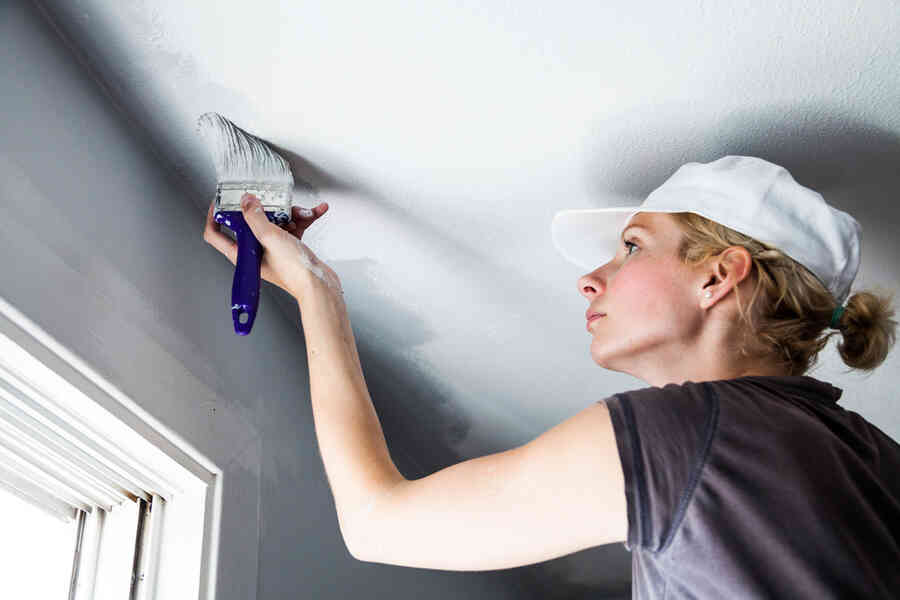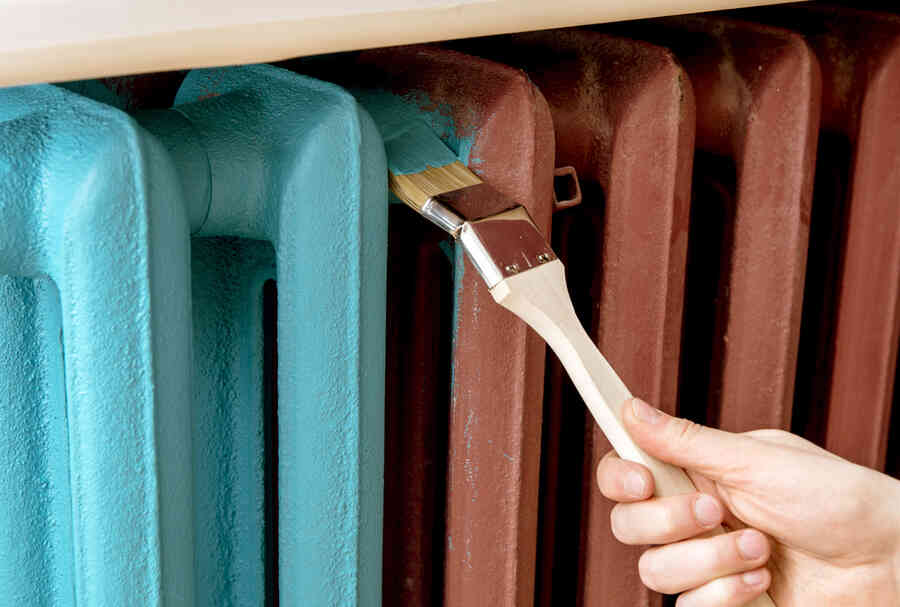Welcome to our comprehensive guide on choosing the best paint for ceilings! When it comes to painting your ceilings, it’s essential to select the right type of paint that not only leaves a visually pleasing finish but also withstands the test of time. After all, no one wants their beautifully painted ceiling to show cracks or peel off prematurely!
In this guide, we’ll explore the different types of paint suitable for ceilings, such as emulsion paint, flat/matte paint, and ceiling-specific paint. We’ll discuss the unique characteristics of each type and help you determine which one will best suit your needs. According to a survey by Homebase, 60% of UK homeowners prefer using emulsion paint for ceilings due to its durability and ease of application.
But it’s not just the type of paint that matters – we’ll also provide you with vital tips for preparing and painting your ceilings flawlessly. From surface preparations to the best techniques and tools, we’ve got you covered.
So, if you’re ready to transform your ceilings into stunning focal points, keep reading to discover all the essential information you need to know!
Types of Ceiling Paint
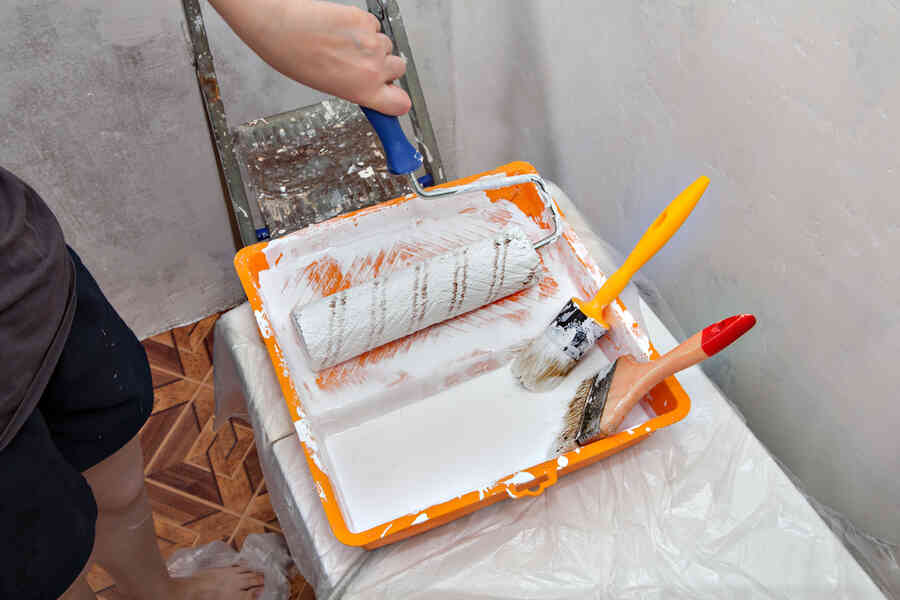
When it comes to painting ceilings, it’s important to choose the right type of paint that will provide the best results. Here are some of the most commonly used types of ceiling paint:
1. Emulsion Paint
Emulsion paint is a popular choice for ceilings due to its versatility and easy application. It is water-based and provides a smooth, matte finish. Emulsion paint is available in various colours, allowing you to match it with your walls or create a contrasting effect. One of the key advantages of emulsion paint is its quick drying time, which makes it an efficient option for ceiling projects.
2. Flat/Matte Paint
A flat or matte finish paint is another common choice for ceilings. This type of paint has a low sheen, which helps to minimize any imperfections on the ceiling surface. Flat/matte paint is often used in areas with less natural light, as it doesn’t reflect light and can create a more subdued atmosphere. Its non-reflective properties can also help to camouflage any flaws or unevenness on the ceiling.
3. Ceiling-Specific Paint
Some paint manufacturers offer ceiling-specific paints that are specially formulated for this purpose. These paints are designed to provide optimal coverage, hide imperfections, and prevent drips or splatter during application. Ceiling-specific paints are often formulated with a thicker consistency to minimize drips and splatter, making them easier to work with when painting overhead. Additionally, they may offer enhanced stain resistance, as ceilings are more prone to stains from factors such as condensation or smoke.
4. Other Considerations
Aside from the type of paint, there are a few other considerations to keep in mind when choosing the best paint for ceilings:
- Sheen level: While matte or flat finishes are commonly chosen for ceilings, you can also opt for different sheen levels such as eggshell or satin. These finishes offer slightly more reflectivity, which can help to brighten up a space and create a subtle shimmer effect.
- Paint durability: Ceilings generally experience less wear and tear compared to walls, so durability may not be as crucial. However, if you anticipate potential moisture issues or frequent cleaning of your ceiling, choosing a paint with higher durability and washability can be beneficial.
- Colour: The colour of the ceiling paint can greatly impact the overall look and feel of a room. Lighter shades can make a space feel more open and airy, while darker colours can add more coziness or drama. Consider the size of the room, the desired atmosphere, and how the ceiling colour will complement the walls and furnishings when selecting your paint colour.
Tips for Preparing and Painting Ceilings
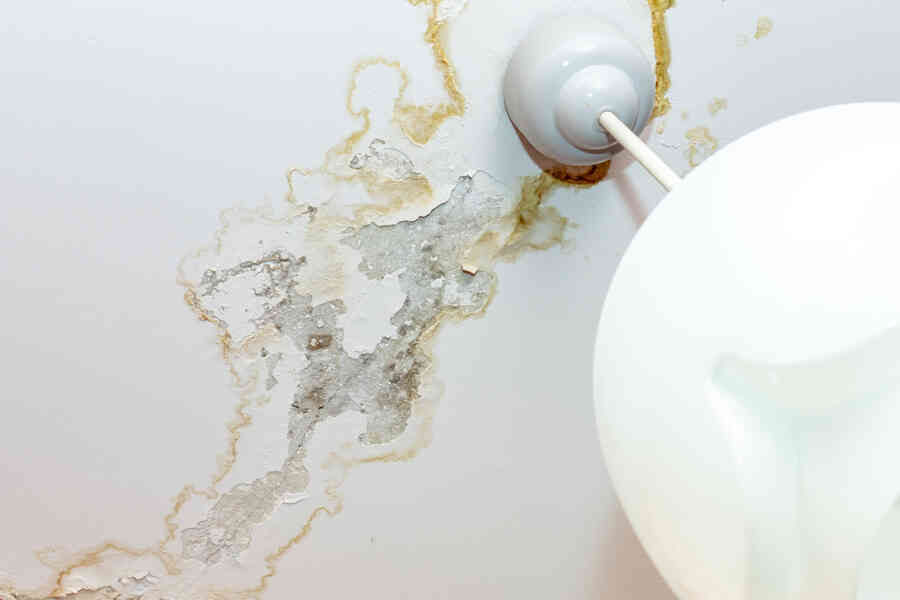
Before you embark on painting your ceiling, it’s crucial to prepare the surface properly to ensure a smooth and long-lasting finish. Here are some handy tips to guide you through the process:
1. Clean the Ceiling
Start by cleaning the ceiling to remove any dust, dirt, or grime that might prevent the paint from adhering properly. Use a broom or vacuum cleaner with a brush attachment to gently sweep or remove any loose particles.
2. Repair Any Damage
Inspect the ceiling for any cracks, holes, or other damage. Use a filler compound that is suitable for ceilings to repair these imperfections. Follow the manufacturer’s instructions for application and drying time. Once the compound is dry, lightly sand the area until it’s smooth and level with the rest of the ceiling.
3. Protect the Room
Painting ceilings can be a messy job, so take the necessary precautions to protect the room. Cover furniture, floors, and fixtures with plastic sheets or drop cloths to prevent accidental drips or splatters. Additionally, use painter’s tape to protect walls, light fixtures, and any other areas you don’t want to be painted.
4. Use High-Quality Ceiling Paint
Investing in high-quality ceiling paint can make all the difference in achieving a professional-looking finish. Look for paints specifically designed for ceilings, as they usually have better coverage, minimal splatter, and a flat or matte finish that helps hide imperfections.
5. Start with a Primer
Applying a primer helps with paint adherence and can even out the surface before painting. Choose a primer that is compatible with your ceiling paint and follow the manufacturer’s instructions for application, drying time, and the number of coats required.
6. Use the Right Tools
Having the right tools can make your painting process much smoother. For ceilings, consider using an extension pole to reach high areas without straining, a roller with a long nap for better coverage, and a brush for cutting in around edges and corners.
7. Apply Thin and Even Coats
When it’s time to paint, remember that thin and even coats are key to achieving a flawless finish. Apply the paint using smooth and overlapping strokes, working in small sections at a time. Avoid overloading the roller or brush with paint to prevent drips or uneven coverage. Multiple thin coats are better than a single thick coat.
8. Proper Ventilation
Ensure the room is well-ventilated during the painting process to allow for proper drying and to minimize the smell of paint. Open windows or use fans to increase airflow and help the paint dry faster.
By following these tips, you’ll be well on your way to transforming your ceiling into a fresh and visually appealing feature of your room!
Top Ceiling Paint Brands in the UK

When it comes to painting your ceilings, using high-quality paint is essential for achieving a professional finish. In the UK, there are several reputable brands known for their excellent ceiling paints. Here are three of the top brands to consider:
1. Dulux
With a long-standing reputation for quality, Dulux offers a range of ceiling paints that are popular among homeowners and professionals alike. Their paints are known for their excellent coverage, durability, and smooth finish. Dulux offers a variety of ceiling paint options, including matt and silk finishes, to suit different preferences and requirements. Their paints are specially formulated to minimize drips and splatters, making them easy to apply on ceilings.
2. Crown
Crown is another well-established paint brand that is highly regarded in the UK. They offer a range of high-quality ceiling paints that provide excellent coverage and a flawless finish. Crown’s ceiling paints are known for their easy application and quick-drying properties, which is especially beneficial when working on large ceiling areas. Their paints are available in various finishes, including matt, silk, and vinyl silk.
3. Farrow & Ball
Farrow & Ball is a luxury paint brand that is renowned for its richly pigmented and eco-friendly paints. While their paints may be pricier than other options, they offer exceptional quality and a wide array of beautiful colors to choose from. Farrow & Ball’s ceiling paints provide excellent coverage and a smooth, low-sheen finish that adds a touch of elegance to any space. These paints are made using only the finest ingredients, ensuring a long-lasting and high-end result.
It’s worth noting that these top ceiling paint brands have been consistently recommended by both professionals and customers in the UK. However, personal preferences and specific project requirements may vary, so it’s important to choose a paint that suits your needs and budget.
Mistakes to Avoid When Painting Ceilings
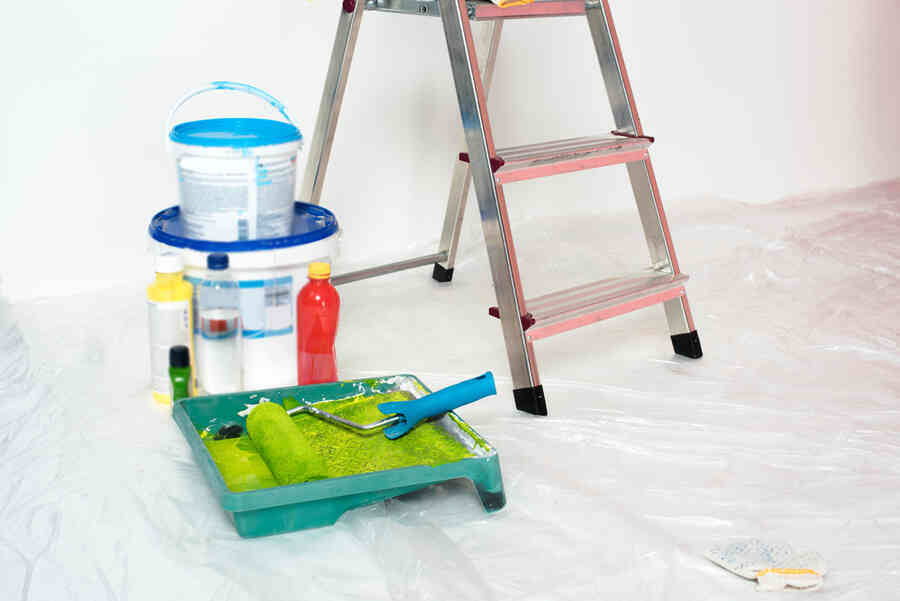
Painting ceilings can be a tricky task, but with the right approach and avoiding common mistakes, you can achieve professional-looking results. Here are some mistakes to avoid when painting ceilings:
1. Skipping Surface Preparations
One of the biggest mistakes people make when painting ceilings is neglecting proper surface preparations. Skipping this step can lead to paint peeling, cracking, or uneven coverage. Before you start painting, make sure to:
- Clean the ceiling thoroughly to remove any dust, dirt, or grease.
- Repair any cracks or holes using a suitable filler.
- Sand the surface gently to create a smooth base for the paint.
2. Using the Wrong Type of Paint
Using the wrong type of paint for ceilings can also lead to disappointing results. Avoid using standard wall paint or gloss paint, as these are not designed for ceilings and may not adhere properly. Instead, opt for ceiling-specific paint or flat/matte paint, which offers better coverage and minimizes surface imperfections.
3. Poor Technique
Technique plays a vital role in achieving a flawless finish on your ceilings. Here are some common mistakes to avoid:
- Not using a roller with an extension pole: Painting ceilings requires reaching high areas without straining yourself. Using a roller with an extension pole will save you from unnecessary stretching.
- Applying too much pressure: Apply the paint using a light touch to avoid creating streaks or uneven coverage.
- Overloading the roller: Avoid putting too much paint on the roller to prevent drips and splatters.
- Not using a primer: Priming the ceiling can help improve paint adhesion and ensure a smoother finish. It also helps to prevent imperfections from showing through the paint.
Avoiding these mistakes when painting your ceilings will help you achieve professional-looking results that enhance the overall aesthetic of your space.
Conclusion
Choosing the best paint for ceilings is crucial for achieving a flawless finish and enhancing the overall aesthetic of a room. After exploring various types of ceiling paint, including emulsion paint, flat/matte paint, and ceiling-specific paint, it is clear that each option has its pros and cons. However, the most important consideration is to select a paint that is specifically designed for ceilings, as it offers the best coverage, durability, and resistance to yellowing over time.
When preparing and painting ceilings, it is important to follow proper techniques and use the right tools to ensure a smooth and professional result. Taking the time to properly prepare the ceiling surface, choosing high-quality paint brands like Dulux, Crown, or Farrow & Ball, and avoiding common mistakes such as skipping surface preparations or using the wrong type of paint will greatly contribute to a successful ceiling painting project.
By giving attention to detail and using the right materials, you can transform your ceilings into stunning features that complete the overall look of your space. So, don’t neglect your ceilings the next time you decide to redecorate – choose the best paint and take pride in the beauty of your entire room.
